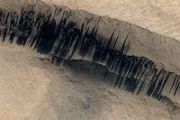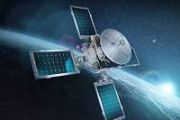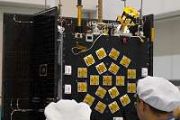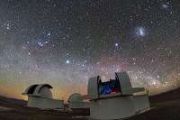
Copernical Team
Paris Air Show 2023 in pictures - Public days
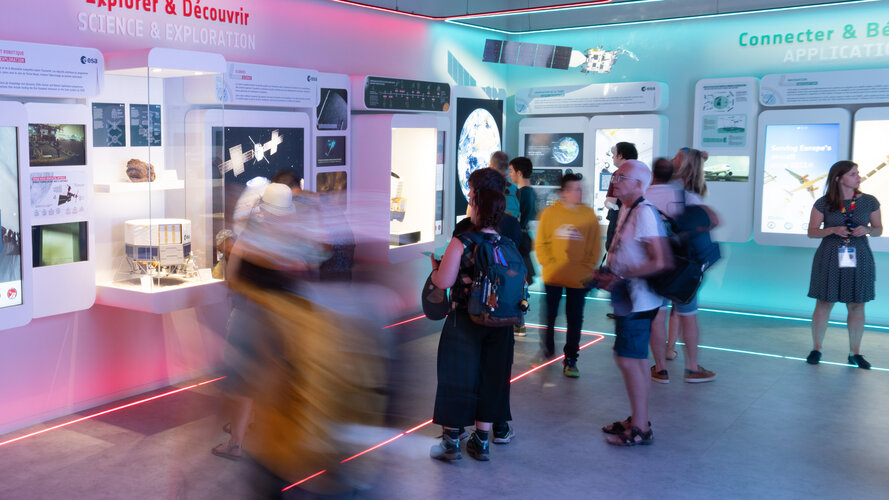
After four intensive days of panels and sessions dedicated to professionals and trade visitors, starting today ESA/CNES pavilion will be hosting a variety of events dedicated to students and general public.
Click the link here to view the full programme of events being held in the ESA-CNES shared area. The public days will take place from Friday to Sunday 23, 24 and 25 June.
ESA Impact 2023 – Quarter 2
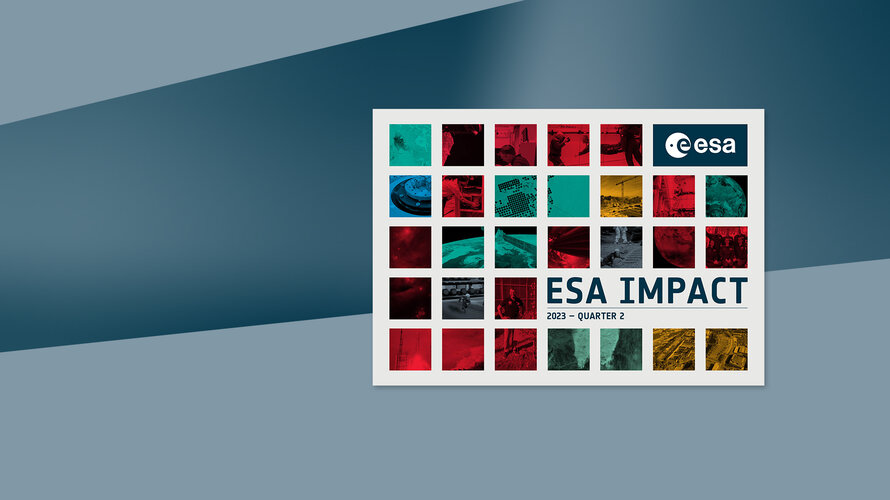
ESA Impact 2023 – Quarter 2
Welcome to this edition of ESA Impact, an interactive publication covering stories and images from the second quarter of 2023.
Euclid launch kit link

Euclid launch kit
Interactive infographics and background information to prepare for Euclid’s launch
Stellar demolition derby births powerful gamma-ray burst
 While searching for the origins of a powerful gamma-ray burst (GRB), an international team of astrophysicists may have stumbled upon a new way to destroy a star.
Although most GRBs originate from exploding massive stars or neutron-star mergers, the researchers concluded that GRB 191019A instead came from the collision of stars or stellar remnants in the jam-packed environment surrounding a
While searching for the origins of a powerful gamma-ray burst (GRB), an international team of astrophysicists may have stumbled upon a new way to destroy a star.
Although most GRBs originate from exploding massive stars or neutron-star mergers, the researchers concluded that GRB 191019A instead came from the collision of stars or stellar remnants in the jam-packed environment surrounding a Reconstructing alien astronomers' view of our home galaxy's chemistry
 Researchers have reconstructed what alien astronomers, observing our Milky Way galaxy from afar, would find if they analysed our home galaxy's chemical composition. The study, which is led by researchers from the Max Planck Institute for Astronomy, is relevant for our own understanding of the cosmos: It allows for a new kind of comparison between our home galaxy and the many distant galaxies tha
Researchers have reconstructed what alien astronomers, observing our Milky Way galaxy from afar, would find if they analysed our home galaxy's chemical composition. The study, which is led by researchers from the Max Planck Institute for Astronomy, is relevant for our own understanding of the cosmos: It allows for a new kind of comparison between our home galaxy and the many distant galaxies tha MAVEN stuns with ultraviolet views of Mars
 NASA's MAVEN (Mars Atmosphere and Volatile EvolutioN) mission acquired stunning views of Mars in two ultraviolet images taken at different points along our neighboring planet's orbit around the Sun. By viewing the planet in ultraviolet wavelengths, scientists can gain insight into the Martian atmosphere and view surface features in remarkable ways.
MAVEN's Imaging Ultraviolet Spectrograph
NASA's MAVEN (Mars Atmosphere and Volatile EvolutioN) mission acquired stunning views of Mars in two ultraviolet images taken at different points along our neighboring planet's orbit around the Sun. By viewing the planet in ultraviolet wavelengths, scientists can gain insight into the Martian atmosphere and view surface features in remarkable ways.
MAVEN's Imaging Ultraviolet Spectrograph Spideroak demonstrates deployment of Orbitsecure on Ball Aerospace payload
 SpiderOak, a leader in zero-trust cybersecurity and resiliency software for space systems, is excited to announce the successful achievement of flight heritage through the deployment and demonstration of its OrbitSecure platform in space. SpiderOak conducted rigorous testing of its end-to-end data security solution on a Ball Aerospace prototype payload currently operational in low-Earth orbit (L
SpiderOak, a leader in zero-trust cybersecurity and resiliency software for space systems, is excited to announce the successful achievement of flight heritage through the deployment and demonstration of its OrbitSecure platform in space. SpiderOak conducted rigorous testing of its end-to-end data security solution on a Ball Aerospace prototype payload currently operational in low-Earth orbit (L D-Orbit secures four multi-million contracts with ASI and ESA
 Space logistics and orbital transportation company D-Orbit secured four multi-million contracts under the framework of Italy's National Recovery and Resilience Plan (PNRR). These contracts represent a great opportunity to take part in national projects that will mark historic milestones the space sector and cooperate with some of the most renown and innovative Italian companies in the industry.
Space logistics and orbital transportation company D-Orbit secured four multi-million contracts under the framework of Italy's National Recovery and Resilience Plan (PNRR). These contracts represent a great opportunity to take part in national projects that will mark historic milestones the space sector and cooperate with some of the most renown and innovative Italian companies in the industry. Rocket Lab to launch space object monitoring mission for Spire Global and NorthStar
 Rocket Lab USA, Inc. (Nasdaq: RKLB) has signed a dedicated launch deal with Spire Global (NYSE: SPIR) ("Spire") to deliver its first four Space Situational Awareness (SSA) satellites to low Earth orbit for its Space Services customer NorthStar Earth and Space Inc. ("NorthStar").
The dedicated mission on Electron will deploy the satellites to a 530km circular orbit from Rocket Lab Launch Co
Rocket Lab USA, Inc. (Nasdaq: RKLB) has signed a dedicated launch deal with Spire Global (NYSE: SPIR) ("Spire") to deliver its first four Space Situational Awareness (SSA) satellites to low Earth orbit for its Space Services customer NorthStar Earth and Space Inc. ("NorthStar").
The dedicated mission on Electron will deploy the satellites to a 530km circular orbit from Rocket Lab Launch Co Space tech to shrink as the limits of quantum physics are tested
 A UK-wide consortium is developing technologies to use nanoparticles as state-of-the-art sensors on small, shoebox-sized satellites known as CubeSats.
The Universities of Warwick, Swansea and Strathclyde have been awarded 250k pounds to further research into nanoparticles and quantum physics in the application of space technology.
Recent advances in the field of levitated optomechani
A UK-wide consortium is developing technologies to use nanoparticles as state-of-the-art sensors on small, shoebox-sized satellites known as CubeSats.
The Universities of Warwick, Swansea and Strathclyde have been awarded 250k pounds to further research into nanoparticles and quantum physics in the application of space technology.
Recent advances in the field of levitated optomechani 














